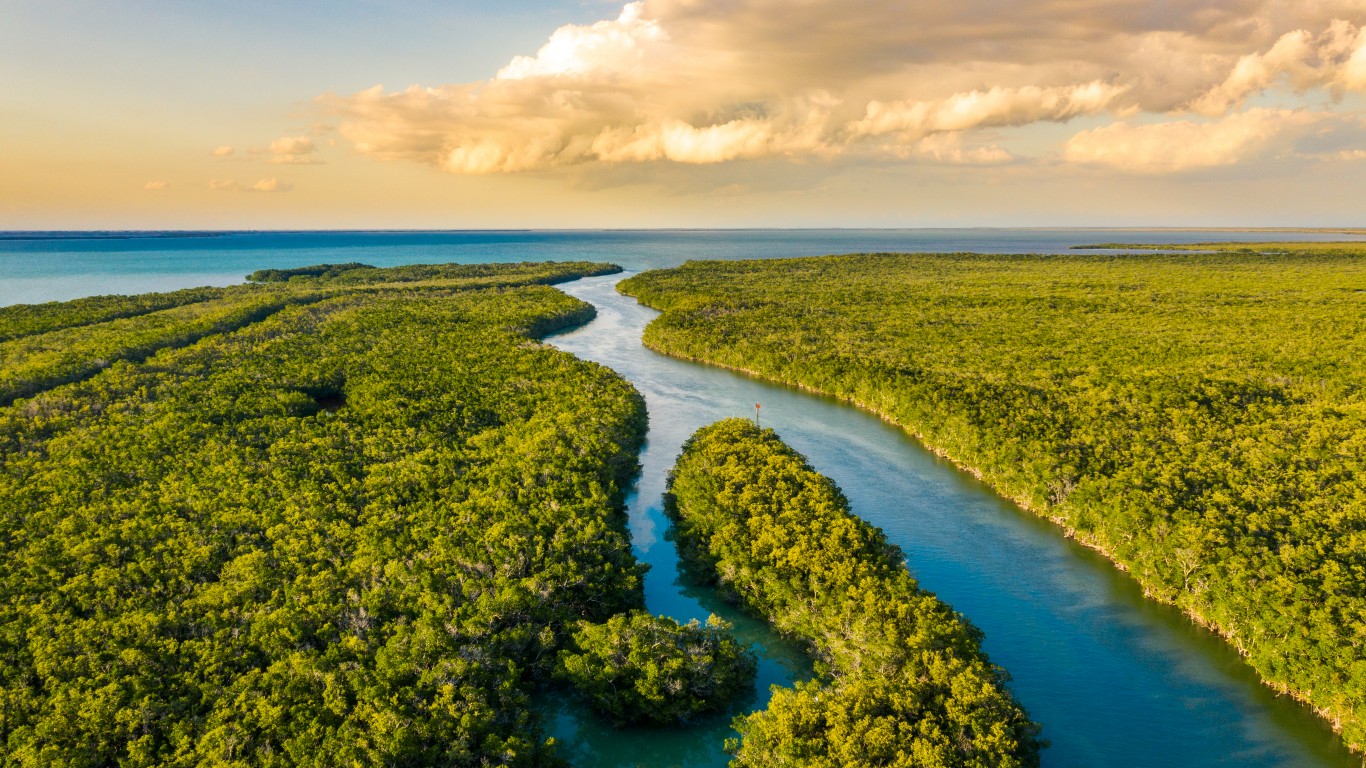
The stated mission of UNESCO seeks to “encourage the identification, protection and preservation of cultural and natural heritage around the world considered to be of outstanding value to humanity.”
World heritage sites include places as divergent as the pyramids of Egypt, the Serengeti in East Africa, rainforests in Madagascar, the Baroque cathedrals of Latin America, and the Great Barrier Reef in Australia. (This is the most beautiful natural wonder in every state.)
UNESCO’s task to preserve humankind’s heritage is a daunting one, however. Some of the sites are in danger, imperiled by armed conflict, increasing urbanization and tourist activity and development, pollution, poaching, natural disasters such as earthquakes and flooding, and climate change. (Here are 28 amazing places that could be underwater by 2050.)
To identify sites currently at risk, 24/7 Wall St. reviewed UNESCO’s List of World Heritage in Danger. There are 52 sites the World Heritage Committee has decided to include on the list. Sites are listed in order of year of designation as World Heritage in Danger.
UNESCO divides humanity’s treasures into cultural and natural sites. There are sites in each category with ascertained or potential dangers. Ascertained dangers are specific and proven imminent threats such as serious deterioration for cultural properties and human encroachment on natural properties. Potential dangers can include lack of conservation policy for cultural properties and development projects near or within a natural property.
UNESCO believes that just putting a site on its List of World Heritage in Danger helps alert the international community to the seriousness of the danger of a given property and the need for prompt action.
Every continent except for Antarctica has endangered sites, though most of the sites are in Asia and Africa. Syria has the most sites on the list with six, followed by Libya with five, and the Democratic Republic of the Congo with four.





